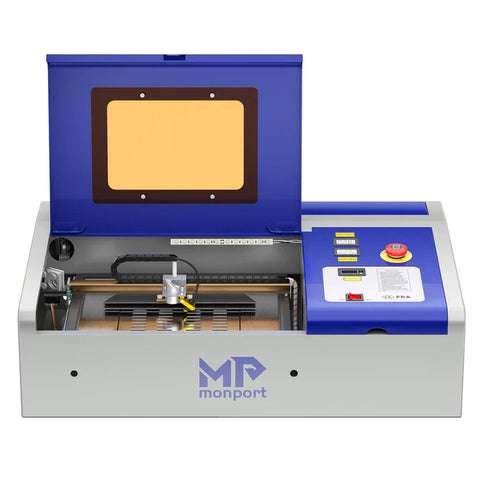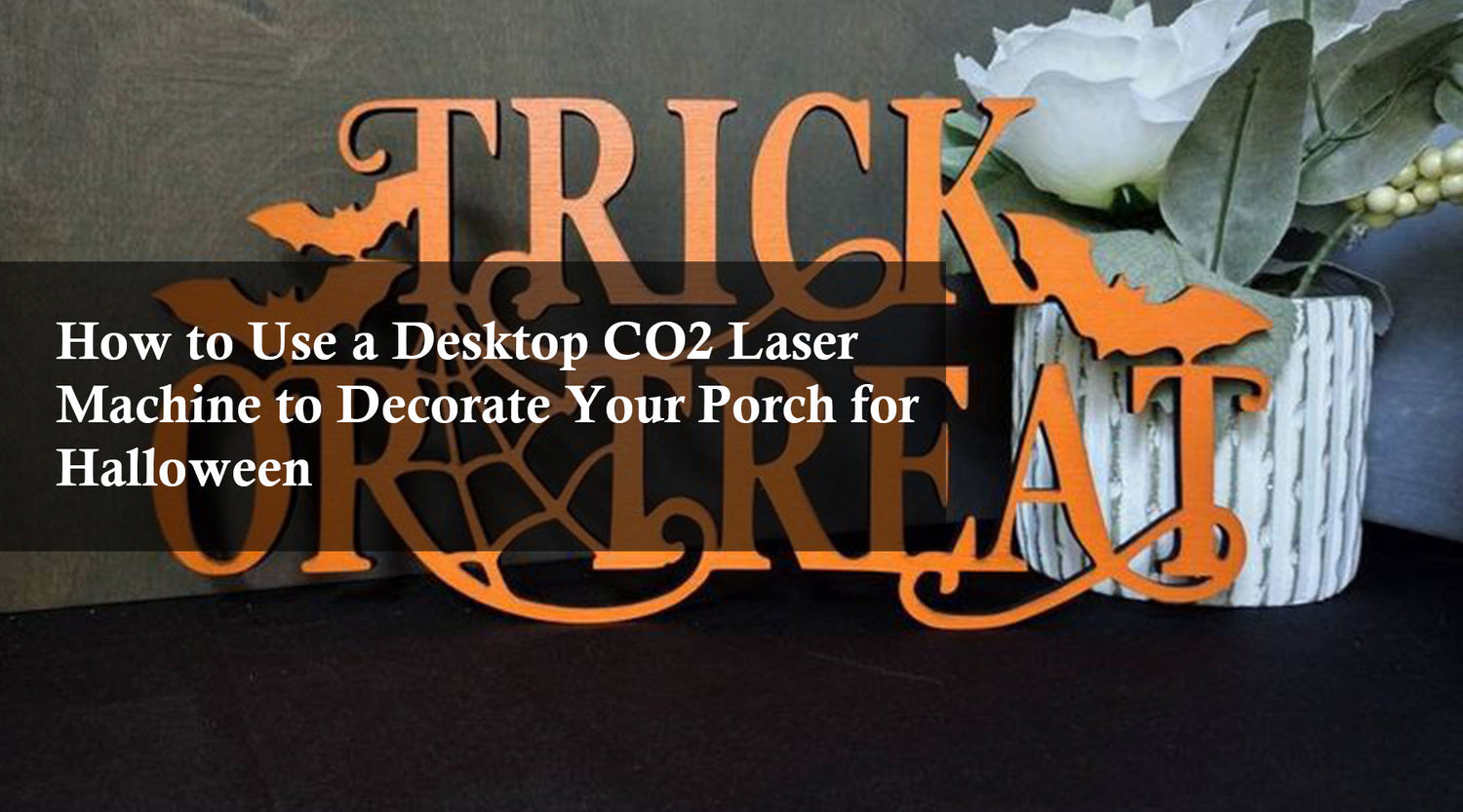Plastic, a ubiquitous material in our daily lives, offers immense versatility for various applications on how to laser engrave plastic. Beyond its functionality, plastic can also serve as a canvas for creative expression through the art of plastic engraver. This blog presents how to laser engrave plastic. This technique allows for precise marking, etching, and even cutting of plastic engraved surfaces, opening doors to unique product personalization, artistic endeavors, and industrial applications.
Understanding Plastic Laser Engraving Technology
Laser engraving utilizes a focused beam of light to remove or modify the surface of a material. In the context of plastics, the laser beam interacts with the material, causing localized melting, vaporization, or chemical reactions depending on the specific plastic type and laser settings. This controlled interaction leaves behind a permanent mark, revealing the underlying material or creating a desired plastic engraved design with plastic engraver or plastic laser etching tools.
Monport 40W CO2 Laser Engraver: A Capable Choice for Hobbyists and Professionals
For creators seeking a top-tier laser engraving solution, the Monport 40W Pro emerges as a compelling choice. This versatile machine boasts an impressive array of features designed to deliver exceptional results on a variety of materials, including plastic engraved creations using plastic laser etching techniques with your plastic engraver.
Key Features:
- High-Speed Performance: Achieve engraving speeds of up to 350mm/s, ensuring efficient project completion.
- Unmatched Accuracy: Deliver intricate details with an engraving precision of 0.01 inches.
- Versatile Material Compatibility: Engrave on a wide range of materials, including wood, glass, acrylic, leather, and plastic engraved items, with your plastic engraver for stunning results.
- Lightburn Software Integration: The upgraded control board seamlessly integrates with Lightburn, the industry-leading design software, granting vast creative possibilities.
- Enhanced Engraving Precision: The built-in air assist function minimizes charring and delivers clean, crisp engravings, particularly on wood.
- Upgraded Components: Experience a refined engraving process with a 19mm adjustable laser head, professional-grade metal rails, and a top-tier mirror holder.
- Red Dot Guidance System: Ensure precise laser alignment for accurate cuts and engravings with the help of the red dot guidance feature.
- Dual Work Bed System: The innovative dual work bed offers increased flexibility. Utilize the stabilizer clamp for irregular objects and the vented level board for flat materials, making engraving various projects effortless.
- Integrated Ventilation System: Maintain optimal laser performance and a safe work environment with the built-in fan and exhaust port that effectively removes fumes.
The Monport 40W Pro stands out as a powerful and versatile laser engraver, well-suited for both professional and hobbyist use. Its exceptional speed, precision, and user-friendly features make it an attractive option for creators seeking to elevate their projects to the next level.
Exploring Safe and Effective Plastics for Laser Engraving
Laser engraving opens a world of possibilities for personalizing and customizing various plastic engraved objects with plastic engraver. Here's a dive into materials that excel in this domain:
Safe and Efficient Options
When selecting plastics for laser engraving, prioritizing safety is paramount. Thankfully, numerous materials offer excellent results without compromising well-being:
- Acrylic (PMMA): A champion in the field, renowned for its crystal-clear finish, ease of engraving, and vast color options.
- Mylar (PET Film): This versatile polyester film finds applications in stencils, electrical insulation, and decorative elements due to its thinness and ability to hold intricate details.
- Polypropylene (PP): A popular choice for packaging and labeling, offering clean, crisp engravings and boasting good chemical resistance.
- PETG (Polyethylene Terephthalate Glycol): This robust and durable plastic delivers sharp engravings while showcasing impressive resistance to chemicals and wear.
- Polystyrene (PS): A cost-effective option, often used for disposable items and limited-use applications. However, due to its lower melting point, precise temperature control is crucial.
Additional Considerations:
While these plastics are generally safe for laser engraving, certain factors require attention:
- Material Thickness: The appropriate laser settings and engraving depth depend on the plastic's thickness. Consulting the manufacturer's recommendations is crucial.
- Laser Type: CO2 lasers are the most common choice for plastic engraving due to their ability to efficiently vaporize material. However, for specific applications, other laser types might be suitable.
- Ventilation: Proper ventilation is essential to remove any fumes or particles generated during the engraving process.
Safety Matters:
Always prioritize safety. Here are some additional tips:
- Consult the Material Safety Data Sheet (MSDS): This document provides crucial information about the plastic's properties and potential hazards.
- Start with small test pieces: Experiment on a small, inconspicuous area of the material to determine the ideal laser settings and avoid damaging the final product.
- Work in a well-ventilated area: Ensure proper airflow to eliminate any fumes or particles released during the engraving process.
Beyond Material Selection
Even with safe plastics, proper operation is essential. Excessive heating can pose health risks, particularly with fluoropolymers which can release harmful fumes at high temperatures. Therefore, maintaining proper ventilation and adhering to safety guidelines is paramount.
Incompatible Materials for Plastic Laser Cutting and Engraving: Safety First!
aser cutting and engraving offer a vast array of creative possibilities, but it's crucial to prioritize safety and choose appropriate materials. Certain plastics are not suited for this process due to potential health hazards and a compromised cutting experience.
Materials to Avoid:
- PVC (Polyvinyl Chloride): Releases harmful gases like hydrochloric acid and carcinogens when subjected to laser cutting.
- ABS (Acrylonitrile Butadiene Styrene): Emits cyanide gas (HCN), which is extremely toxic and can lead to organ failure.
- Carbon Fiber: Highly resistant to laser cutting and can damage the laser cutter.
- Polycarbonate: Resists laser cutting due to its properties, resulting in poor-quality cuts and potential damage to the laser cutter.
- HDPE (High-Density Polyethylene): Melts rather than vaporizes under laser heat, leading to a messy cutting process with melted plastic residue.
Reasoning Behind Incompatibility:
- Toxic Fumes: These materials release hazardous gases and carcinogens when subjected to laser heat, posing severe health risks.
- Inefficient Cutting: Certain plastics resist laser cutting due to their physical properties, resulting in poor-quality cuts and potential damage to the equipment.
- Melting and Dripping: Some plastics melt instead of vaporize under laser heat, creating an undesirable outcome.
Safety First:
Always prioritize safety and consult the manufacturer's recommendations for compatible materials before operating your laser cutter.
Factors Affecting Plastic Laser Engraving Results
- Plastic Type: As mentioned earlier, the type of plastic significantly impacts the engraving outcome. Different plastics react diversely to the laser beam, resulting in varying levels of detail, color contrast, and potential surface melting.
- Laser Power and Settings: The laser's power output and settings like pulse rate and scan speed play a crucial role. Higher power settings can lead to deeper engravings but also increase the risk of burning or melting the plastic. Finding the optimal settings requires experimentation based on the specific plastic and desired outcome.
- Focus and Beam Quality: A well-focused laser beam ensures precise engraving and minimal heat-affected zones. Conversely, a poorly focused beam can cause uneven markings and potential damage to the surrounding material.
Essential Equipment for Laser Engraving Plastics
- Laser Engraver: The core equipment, housing the laser source and control system. Different types of lasers are available, with CO2 lasers being the most common choice for plastic engraver due to their ability to efficiently interact with various polymers.
- Fume Extraction System: Laser engraving generates fumes and airborne particles. A proper fume extraction system is crucial to maintain a safe working environment and prevent the inhalation of harmful substances.
- Computer and Software: The laser engraver is typically controlled by a computer equipped with specialized software. This software allows for design creation, image importing, and precise control over laser settings.
Step-by-Step Guide to How to Laser Engrave Plastic
- Prepare your plastic: Ensure the plastic surface is clean, dry, and free of dust or debris. Any contaminants can affect the engraving quality and potentially damage the laser.
- Design Creation: Develop your desired design using software compatible with your laser engraver. Popular options include CorelDraw, Adobe Illustrator, and specific software provided by the laser manufacturer.
- Material Selection and Settings: Choose the appropriate plastic type based on your desired outcome and ensure your laser settings are optimized for the specific material. Consult the user manual or consult with a laser engraving expert for recommended settings.
- Test Engraving: Before working on your final piece, conduct a test engraving on a scrap piece of the same plastic to fine-tune your laser settings and ensure the desired results are achieved.
- Laser Engraving Process: Secure the plastic material onto the laser engraver's workbed. Once the design and settings are confirmed, initiate the engraving process.
- Post-Processing (Optional): Depending on the plastic type and desired finish, post-processing steps like sanding, polishing, or painting might be necessary.
Safety Precautions
- Always wear appropriate eye protection: Laser beams can cause permanent eye damage. Utilize safety glasses specifically designed for the laser wavelength used in your engraver.
- Maintain proper ventilation: Fume extraction systems are essential to remove harmful fumes and particles generated during the engraving process.
- Never leave the laser unattended while operating: Always supervise the laser engraving process to prevent accidents and ensure proper operation.
Creative Laser Engraving Ideas for Plastic
Laser engraving on plastic opens doors to a world of creative possibilities. Here are 5 inspiring ideas to get you started:

- Product Personalization: Engraving logos, names, or custom designs on plastic products like keychains, phone cases, awards, and promotional items adds a unique touch and increases their perceived value.

- Signage and Labeling: Create clear and durable signs, labels, and name tags for various applications. The high precision of laser engraving allows for intricate details and clear text.

- Art and Decoration: Transform plastic sheets into unique artistic pieces. Laser engraving allows for the creation of intricate patterns, portraits, and other creative designs, opening doors for artistic expression.
Remember:
- When choosing a plastic for engraving, consider its suitability and the desired outcome. Acrylic is a popular option due to its versatility.
- Experiment with different engraving techniques and settings to achieve the effects you desire.
- Explore online resources and communities for inspiration and guidance on laser engraving projects.
These are just a few starting points to spark your creativity. With laser engraving, the possibilities for transforming plastic into unique and personalized items are endless.
Beyond the Basics: Advanced Techniques in Laser Engraving Plastics
- Multi-Layer Engraving: This technique involves engraving multiple layers within the plastic with varying depths. This can create stunning 3D effects or allow for color filling with contrasting materials.
- Raster Engraving: This approach utilizes a series of tiny dots to create the image. It offers greater detail and photorealistic capabilities compared to standard vector engraving.
- Laser Cutting: While primarily used for precise cutting of plastic materials, laser cutting can also be employed for creating intricate designs with clean edges.
Choosing the Right Laser Engraver for Laser Engrave Plastic
The selection of a suitable laser engraver hinges on several factors:
- Budget: Laser engravers range in price depending on their capabilities and features. Hobbyists may opt for more affordable options, while professional applications might require industrial-grade machines with higher power outputs and advanced functionalities.
- Material Compatibility: Ensure the laser engraver is compatible with the types of plastic you intend to work with. CO2 lasers are a versatile choice for various plastics, while other laser types might be more suitable for specific materials.
- Desired Features: Consider the features important for your needs. These may include engraving area size, laser power output, availability of specific software, and ease of use.
Additional Tips for Successful Laser Engraving
- Start with simple designs: As you gain experience, gradually progress to more intricate projects.
- Experiment with different settings: Finding the optimal settings requires experimentation based on the plastic type and desired outcome.
- Join online communities: Connect with other laser engraving enthusiasts to share knowledge, troubleshoot challenges, and gain inspiration.
Conclusion
Laser engraving presents a fascinating technique for transforming plastic engraved objects into personalized items, creative artworks, and functional prototypes. With the right equipment, safety measures, and an understanding of the process, you can unlock the immense potential of plastic laser etching and embark on a rewarding creative journey.
Unlock Big Savings at Monport Laser! Use code BESTMP10 at checkout for an exclusive discount – Click here to shop now!











